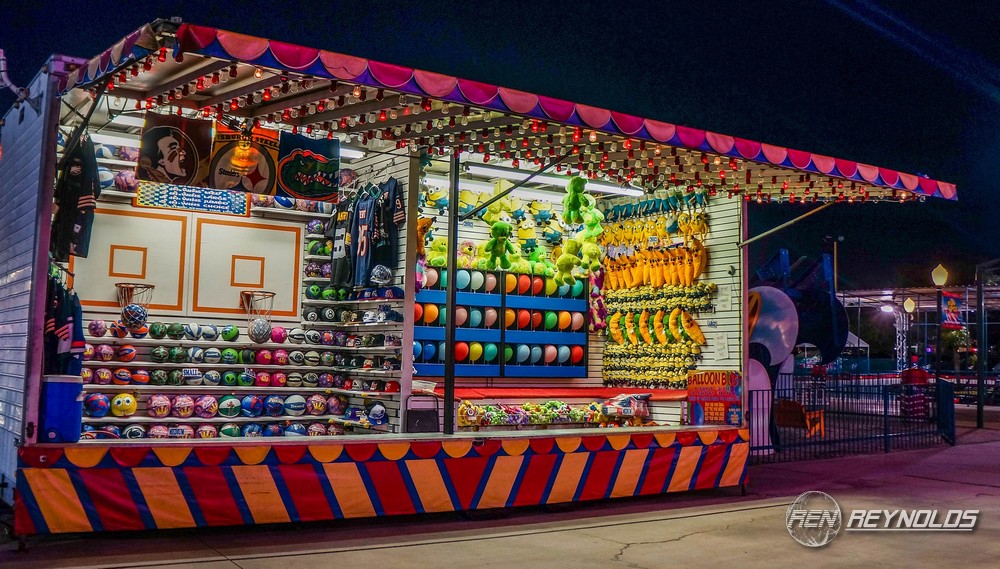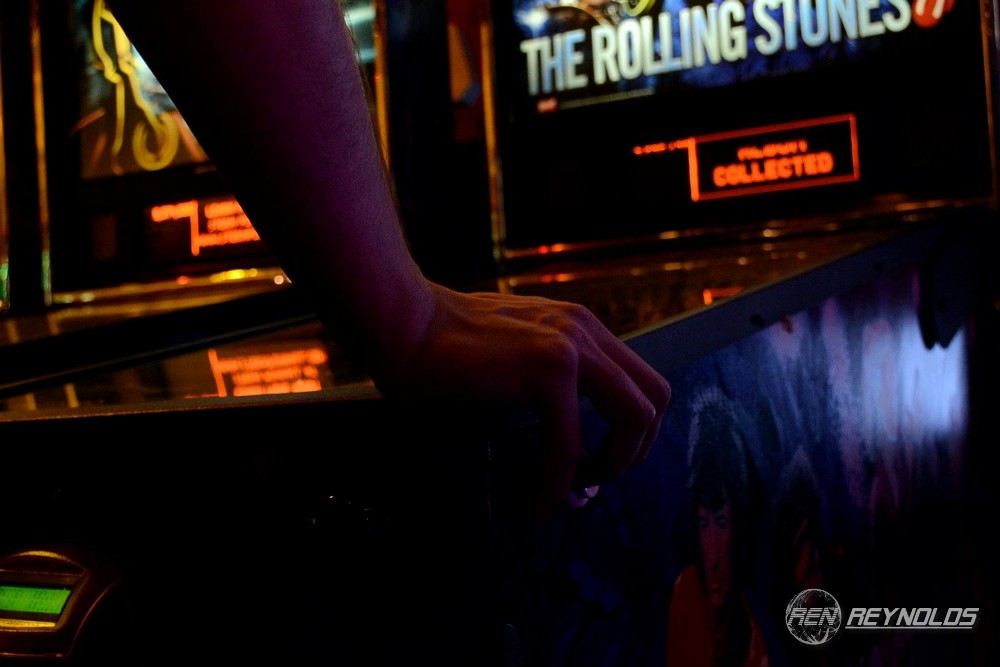When we think of gaming platforms nowadays, the first thing that usually comes to our mind is the dispute between PC gamers and people who prefer to play video games on home consoles. Another gaming platform also used by many is represented by mobile devices which run on Android or iOS most times. However, when it comes to the video game platform topic, just a few realize that arcade games represent a totally different category. They used to be extremely popular a few decades ago – so what happened to those machines where people used to stand in a queue in bars and other public places? Let’s see the main landmarks of arcade game history.
An interview with Dennis Boyd, who created no fewer than 6 playable arcade games in the late 80s/early 90s:
“Back in the 1980s, we looked forward and created the future because we were robbed of the past. This movement (a period of time from the end of the 20th century to around the year 2000) feels amorphous, just like yesterday, but it is real and it is happening.
But why?
That becomes apparent when you look at the half a billion internet users in the world, and the majority of them are not gamers. Now what’s this side of a decade? I could be wrong, but it feels about the right length of time to me. There seems to be a huge gap between “then” and “now”.
Maybe this is because there is an age gap. I doubt anyone born after the year 2000 goes out of their way to see the games from their youth. In an attempt to rewrite their history, they just hide these great games from public view. I am one of those gamers.
I have spent almost 30 years of my life caring about my past. I care about it so much that I’ve built my own library of old games. But when these games get publicised, I’m embarrassed that I care about them so much. They are clearly old games, and have not aged well.
Other people, I know, say that they are classic games, and that’s fine. But what about the thousands of gamers who have grown up and made their own library? What about the hundreds of thousands who have never played a game because they didn’t think it was important?
There is an entire generation of gamers who haven’t heard of the Atari or NES. And in a way that is understandable.
Because for us, everything is digital, and the games have been simplified. The digital age can only mean one thing, and that is that we don’t need to know the history behind these video games. The multiplayer games are hardly ever enjoyed in groups. There has never been a music video in which the soundtrack features guitar solos.
It would be like finding out that you grew up in the 1980s and then that the song on your record player is a cover of a riff from a 70s rock band. But there is a reason for all of this. Modern games are rarely the kind that went against the grain. The pinnacle of the gaming industry was the 1990s, when we had Star Wars, Tron, Final Fantasy, E3, Doom and Metal Gear Solid.
Video games were being made in glorious, unabashed detail, and up until that point you thought about games as a market and not a medium. We didn’t know games existed until the late 1990s. And even after they did, they were seen as something old and traditional.
Since the 1980s, we have been creating the future. Since the 1980s we have had to give up our insecurities and embrace the future. We have taken our nostalgia and built something new out of it.
There will still be nostalgia, because those memories will always exist, but the most interesting question about games now is why? Is it because there’s something special about the past that we haven’t discovered yet?
The short answer is no. It’s because we’re using the past as a means of self-expression. And that is a good thing.”
Thanks to Dennis for this insight into his view of the state of the arcade. But if you’re wondering what on earth he’s talking about, here’s some more in-depth information for you to swallow:
Going to the Arcade
One of the best and simplest definitions of arcade games can be seen on Wikipedia: “An arcade game or coin-op is a coin-operated entertainment machine typically installed in public businesses such as restaurants, bars and amusement arcades”.
The golden age of arcade video games
The period when arcade video games were the most popular stretched between the late 1970 and the mid-1980s. Another short popularity period was observed in the early 1990s, but something ended it very soon.

What caused the popularity of arcade video games to decline?
It was the home-based video game consoles like Xbox and PlayStation that put an end to the era of arcade games. The smaller costs of these products and the comfort they provided to gamers made consumers adopt home consoles instead of dealing with obstacles like reaching a public business and waiting for the arcade game to become available.
Their predecessors were made of wood
The history of arcade games starts with mechanical games installed in amusement parks. These pieces of equipment were also coin-operated and the most common games they featured were shooting galleries, tossing balls, and pinball. However, they were not electronic; only in the late 1970s were pinball machines updated to electronic operation and scoring.

Sega introduced one of the earliest arcade games
In 1966, Sega released the electro-mechanical game called Periscope, which was a submarine simulator and light gun shooter. The game had a huge success in Europe, North America, and Japan. You couldn’t call it a video game by today’s standards, because it used rear image projection to create moving animation projections.
And the earliest known coin-operated video game is…
…Galaxy Game, a coin-operated version of the Spacewar video game. It was created and set up by students at Stanford University in 1971. Soon, the first mass-manufactured video game followed as well, Computer Space, created by Nolan Bushnell, and in 1972 Atari released the first commercially successful video game for arcade machines, Pong.
The blockbuster came in 1978
Space Invaders, released by Taito in 1978, was the first blockbuster in the world of arcade video games. This title marked the beginning of the golden age of arcade video games. From that moment, these machines spread in settings like grocery stores, restaurants, bars, and movie theaters, mostly in the United States, in Japan, and in other western countries.
The most popular games
The most successful titles were Space Invaders (1978), Galaxian (1979), Pac-Man (1980), Defender (1980) Battlezone (1980), and Bosconian (1981).
Renaissance
A resurgence of arcade video games was observed in the early 1990s, marked by the release of Street Fighter II – it was the era of fighting games like Pit-Fighter, Mortal Kombat, Fatal Fury: King of Fighters, The King of Fighters, and Killer Instincts.
Final decline
As mentioned earlier in this article, something has caused the popularity of arcade video games to decline significantly – the emergence of the fifth-generation home consoles like Sega Saturn, Nintendo 64, and PlayStation, which offered true 3D graphics. Another factor was represented by the success of personal computers starting with the mid 1990s – their 3D accelerator cards also made PC gaming more attractive. Revenues gradually dropped, and in the early 2000s the possibility to play games in multiplayer using an Internet connection gave another hit to arcade games.
Arcade games have become a niche market
Arcade games are not dead, though; there are still businesses operating this type of equipment, such as movie theaters and family fun centers. They became the favorite of a small number of passionate hobbyists and people interested in vintage stuff, such as gaming hipsters. One of the weapons that arcade games have thrown into the fight for survival is represented by special controllers people don’t have access to at home, for instance game floors for dance games, which sense the user’s movements.

The situation is not the same everywhere
Arcade games are still widespread in China and in Japan. Manufacturers in the Japanese arcade industry like Sega, Taito, Konami, and Bandai Namco are no longer competing against each other, but they are collaborating to keep the arcade game industry successful and relevant to today’s consumers.
Preserving successful games from the past
This is possible through the use of emulators such as MAME, which can be run on modern computers and devices – the actual code from the 1970s or 1980s is preserved and translated by modern software. It is possible to emulate arcade games on home consoles and to play titles such as Space Harrier, Mappy, Tecmo Bowl, Star Force, Asteroids, and Pac-Man.
The most successful arcade video game remains Space Invaders
Space Invaders was released in 1978 and 360,000 units were sold until 1980. The estimated gross revenue with 2016 inflation taken into account is $9.92 billion. The game was originally manufactured and sold in Japan by Taito and its aim was to defeat waves of aliens by using a laser cannon. The more aliens you destroyed, the more points you scored. The game was inspired by successful media of the time (Star Wars series, Breakout, and The War of the Worlds).
The story of arcade games is fascinating and nostalgic at the same time. It follows the general trend of media consumption – from public activity to private business. These days, we have video games easily available on our smartphones, but we seem to enjoy gaming less than arcade game players of the 70s and 80s – and they no longer encourage socialization. The good thing is that arcade games have not disappeared completely and we will be able to enjoy them as well in the future.




